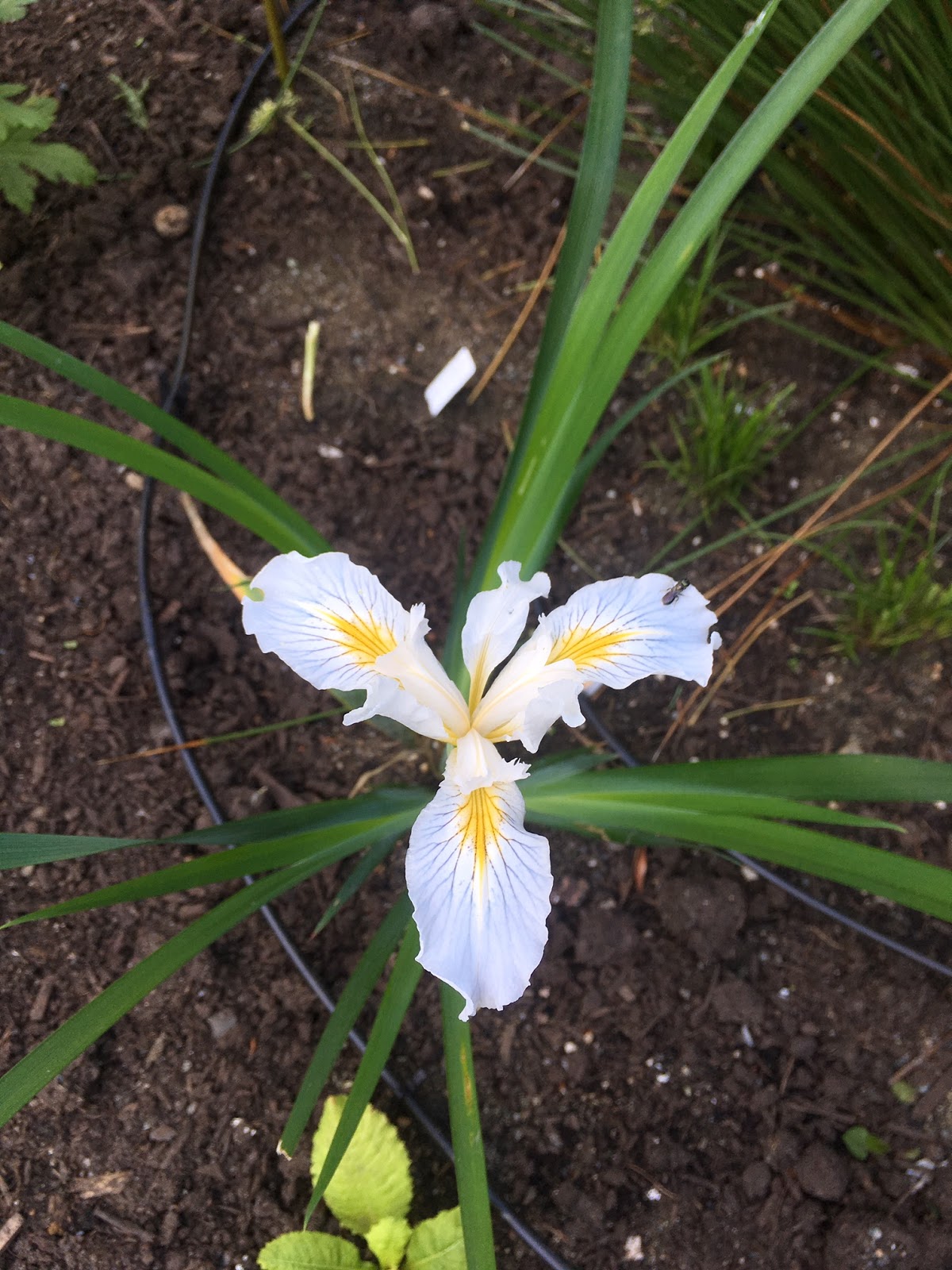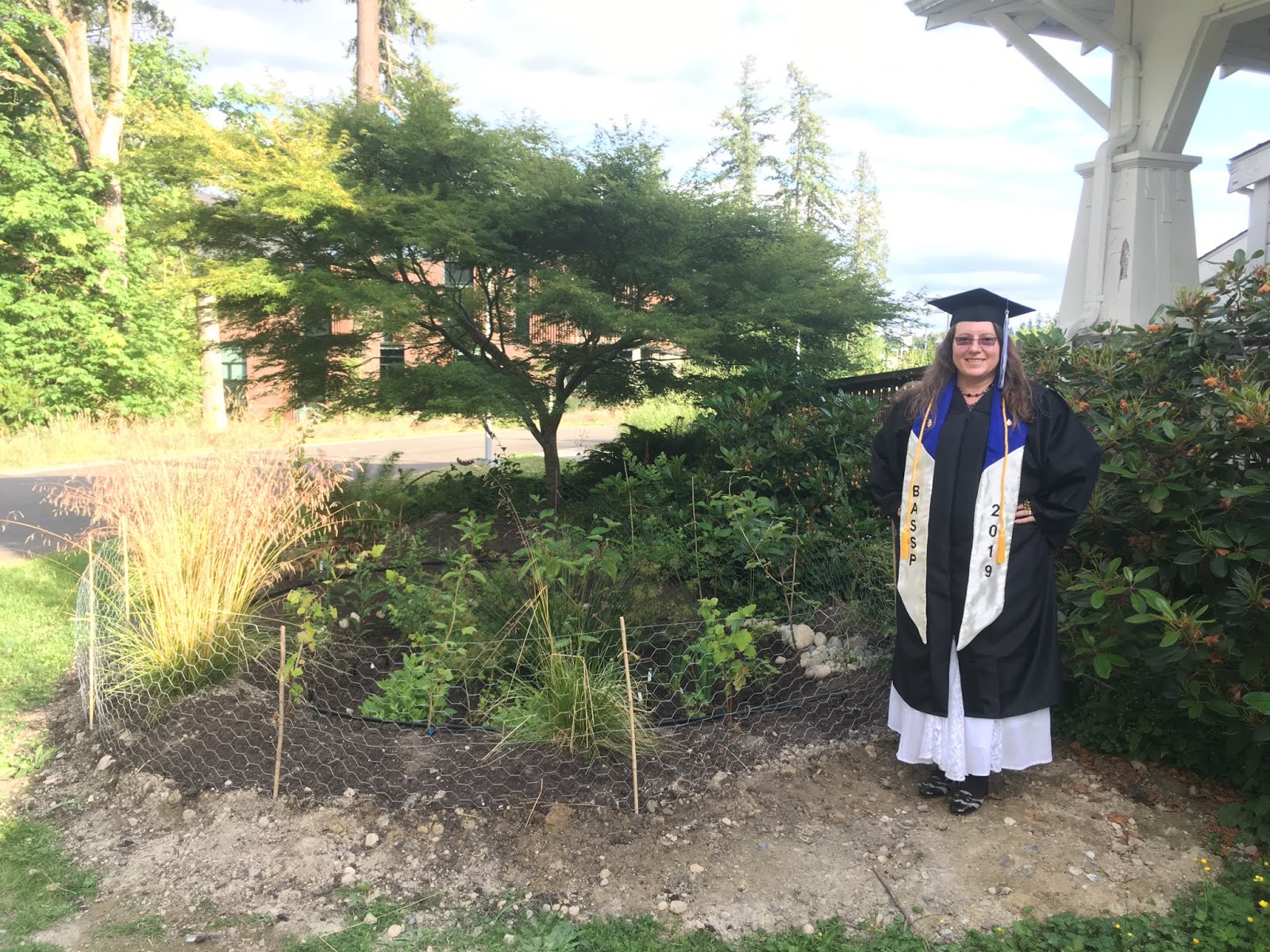Why Install a Rain Garden?
 |
Here in the Pacific Northwest, winters can be very rainy. The Puget Sound area is also growing quickly, and as more areas are developed they are covered in impervious surfaces such as roads, roofs and parking lots. When rain falls on impervious surfaces it moves swiftly over them and into storm drains, where it is carried untreated directly into waterways and then flows into the Puget Sound. As stormwater flows over streets and roofs it picks up pollution such as oil, trash, animal waste, pesticides, fertilizers, salt and other pollutants. Car exhaust deposits polycyclic aromatic hydrocarbons on the streets, which when washed into waterways damages the ecology and accumulates in the tissues of animals. Streams in the Pacific Northwest are important habitat for many kinds of birds and fish, and are critical habitat for juvenile and spawning salmon. Aquatic species, including animals like frogs and dragonflies that spend part of their lives in the water and part of it on land, are extremely sensitive to pollution and need us to protect the entire watershed their lifecycle depends on.
Green Infrastructure
There are many green infrastructure approaches to reducing stormwater runoff. Some of these include installing green roofs, using permeable paving, depaving, and planting bioswales, and rain gardens. All of these options are ways to slow the flow of water and let it filter through vegetation and sink into the ground or evapotranspirate into the air rather than run rapidly into streams. Learn more about rainscaping here.
The Cascadia College campus uses many of these green infrastructure approaches, including a green roof on the CC3 building, bioswales, rain gardens, and also features a food forest, a meadow planted with native species, and a highly successful restored wetland. The Truly House rain garden is meant to provide a demonstration of the rain garden strategy that the public can learn from and enjoy.
Rain Gardens
A rain garden is different from ordinary landscaping because it has an inflow from an area being drained, a sunken ponding area filled with bioretention soil, a berm to hold water inside, water-loving native species of plants to help filter and absorb water, and sometimes an outflow on the opposite side of the inflow. This slows water flowing from a rooftop or a parking area, and filters it, so that when it flows out it is cleaner, carries less sediment with it, and has a chance to sink into the ground and replenish the water table. The garden can be planted with flowering plants and shrubs that provide food and habitat for pollinators as well. Adding a rain garden not only protects water downstream by filtering runoff; it also increases property values. Rain gardens are typically low-maintenance once installed, and their beauty enhances the neighborhoods they're sited in.
To create the Truly House rain garden, a circular area ten feet across and two feet deep was excavated from the lawn. The soil was clay glacial till, which was very compacted and absorbed water slowly. This was replaced with bioretention soil, which is 70% sand and 30% compost; this absorbs water readily and nourishes the plants growing in it naturally. A bowl shape was created. An inflow armored with rock was put in place to direct water from the house's roof gutter downspout into the garden, and a berm was built up around the garden. Eighty native plants of twenty different species were planted in the bowl and on the bern, with the most water-tolerant species at the base of the bowl. An irrigation system was installed to help the young plants get established, which will be needed to keep them healthy during the area's hot, dry summers for the first three years.
|




Comments
Post a Comment